Abstract
Soluble crystalline bacterial α-amylase (BαA)-mouse anti-BαA antibody complexes (Ag—Ab complexes) elicited a primary antibody response in mice with a single intravenous injection, while free BαA could not. The response was dose dependent. Ag—Ab complexes were not only phagocytosed but also degraded more rapidly than free BαA in vivo and in vitro but these characteristics themselves were not important for immunogencity of the complexes.
The Ag—Ab complexes phagocytosed by cells in normal spleen and lymph node elicited a primary antibody response when injected into non-irradiated mice but the response was suppressed when anti-BαA antibody was simultaneously injected. On the other hand, free BαA phagocytosed by cells could not elicit the response.
The degraded products of complexes phagocytosed by normal spleen and lymph node cells were highly immunogenic and probably retain antigenic fragments. They elicited an even higher primary antibody response than the original complexes and were also more effective in eliciting a secondary response from primed cells than the original complexes or free BαA. The degraded products of free BαA, however, were ineffective not only for the primary response but also for primed cells.
Ag—Ab complexes prepared with heterologous rabbit antibody were ineffective for the primary antibody response.
Full text
PDF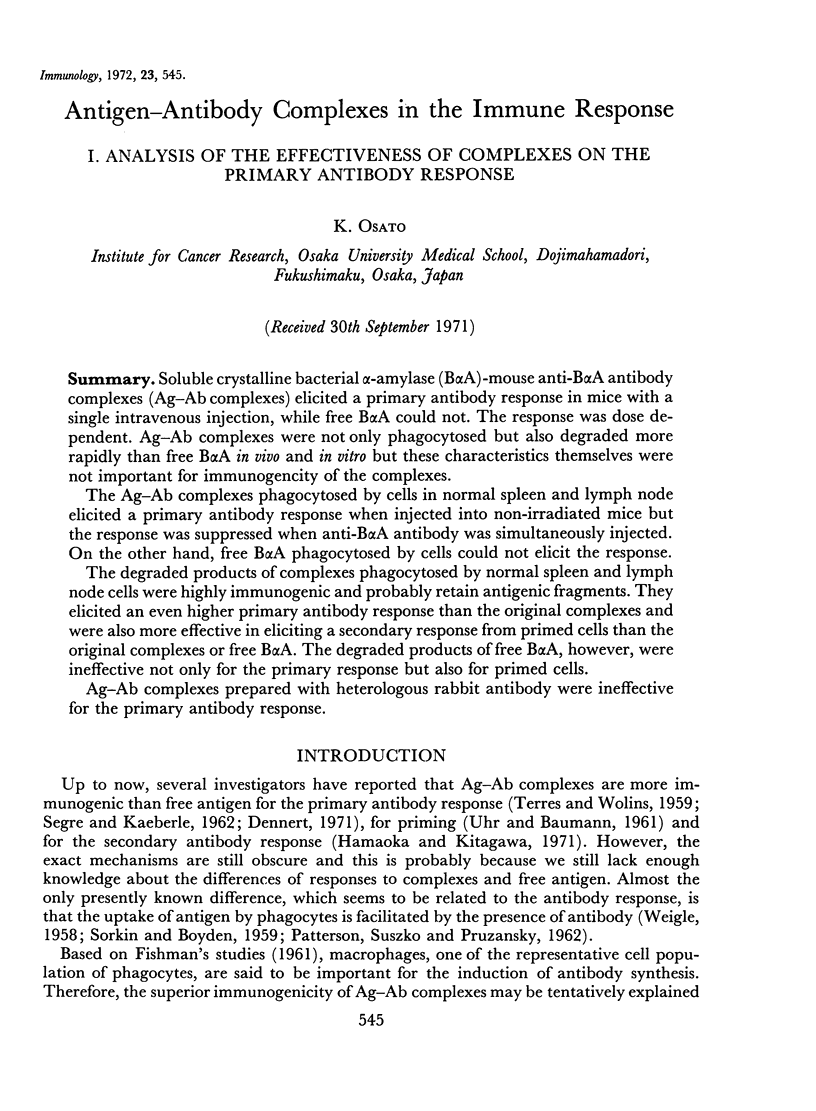
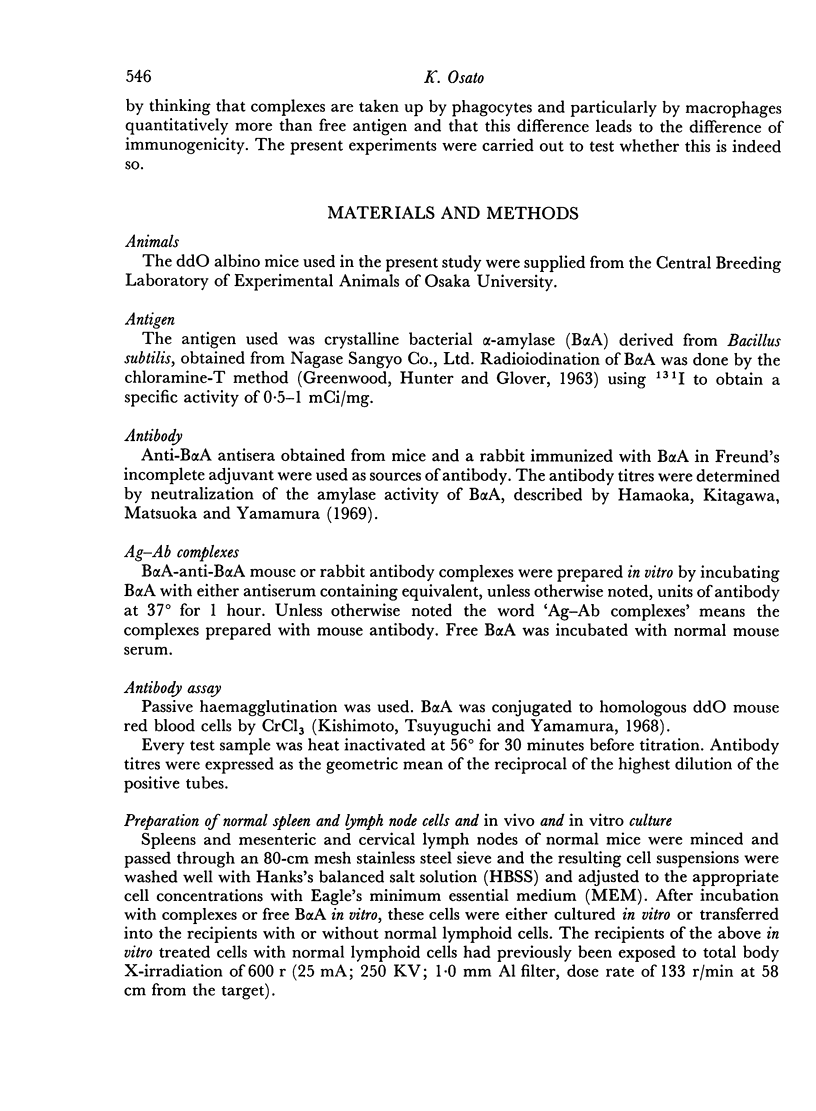
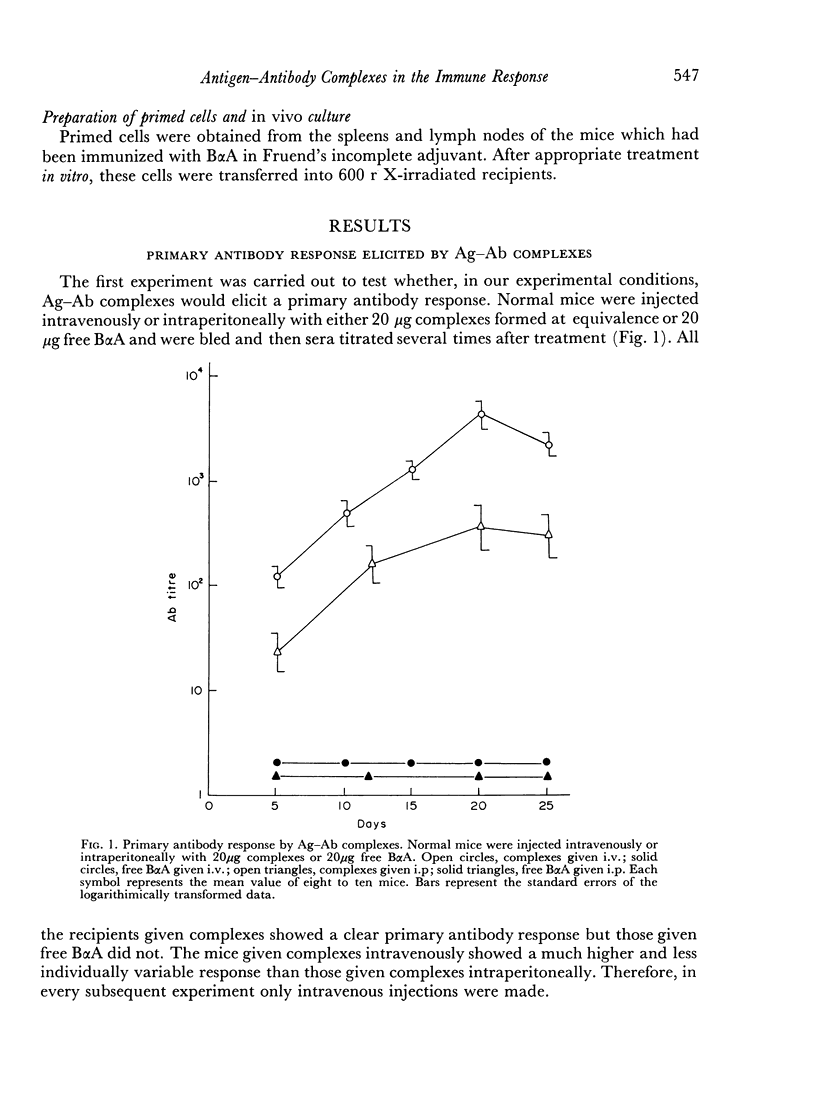
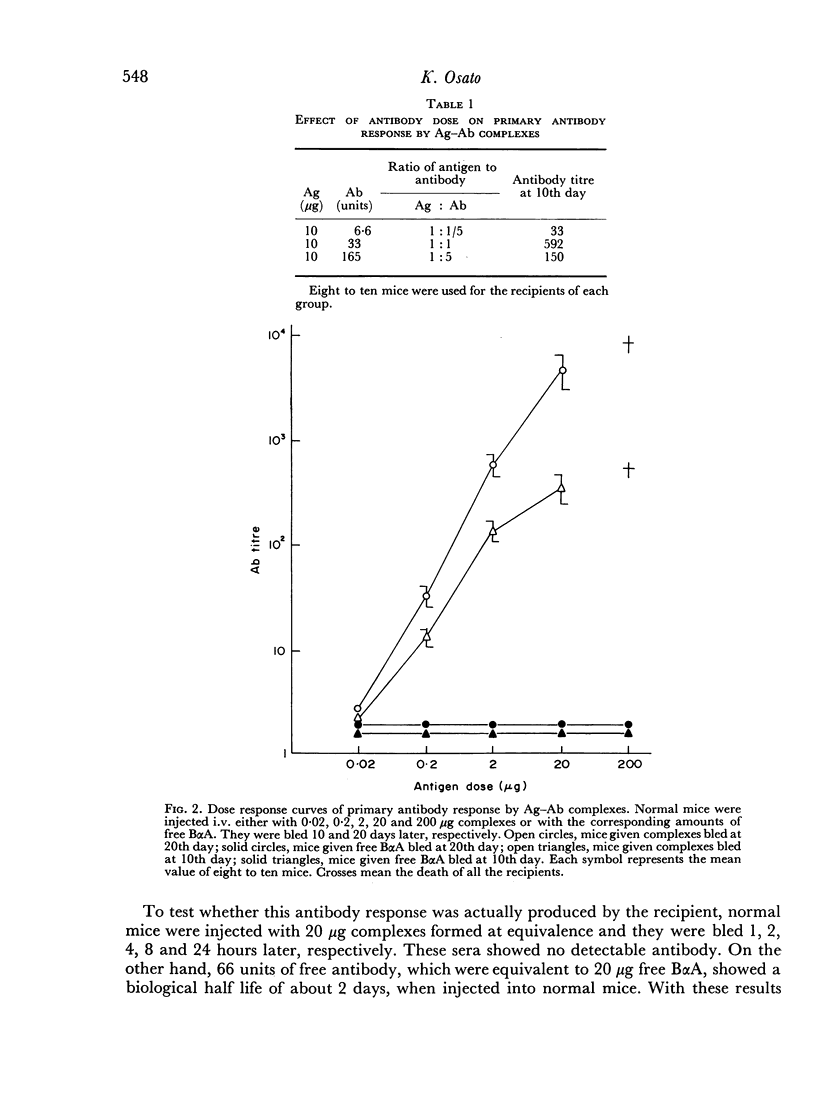
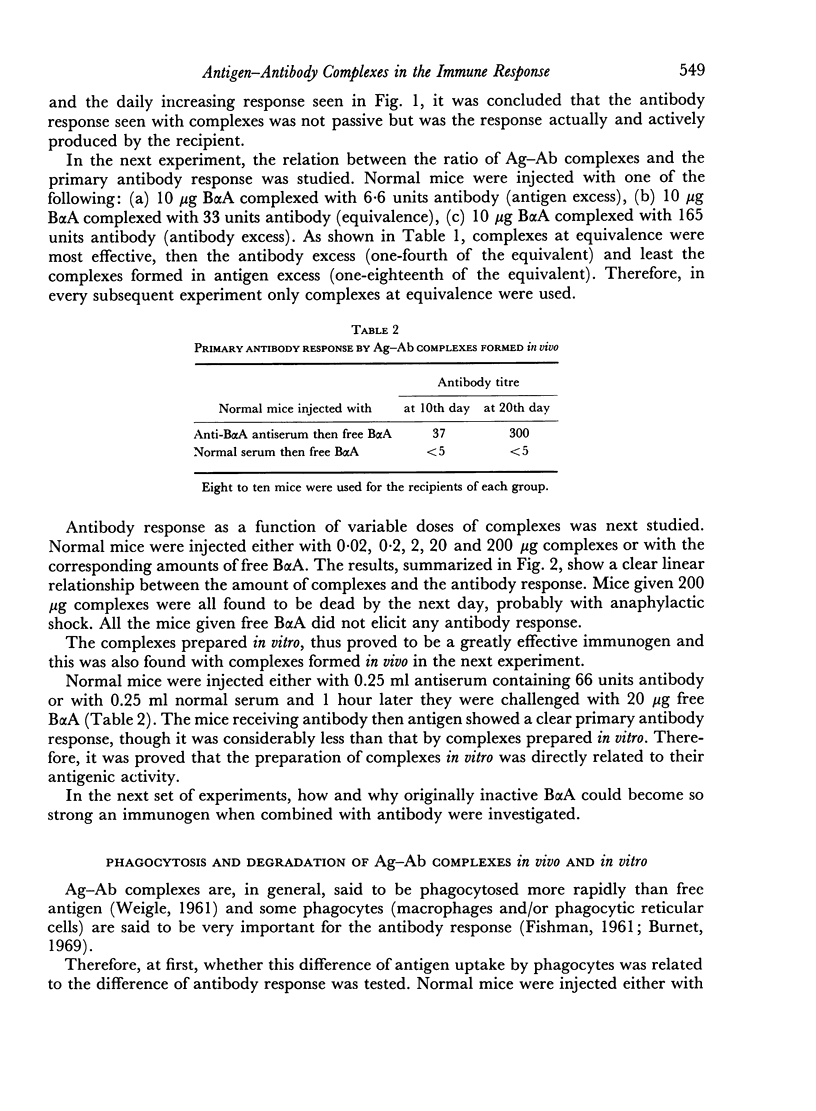
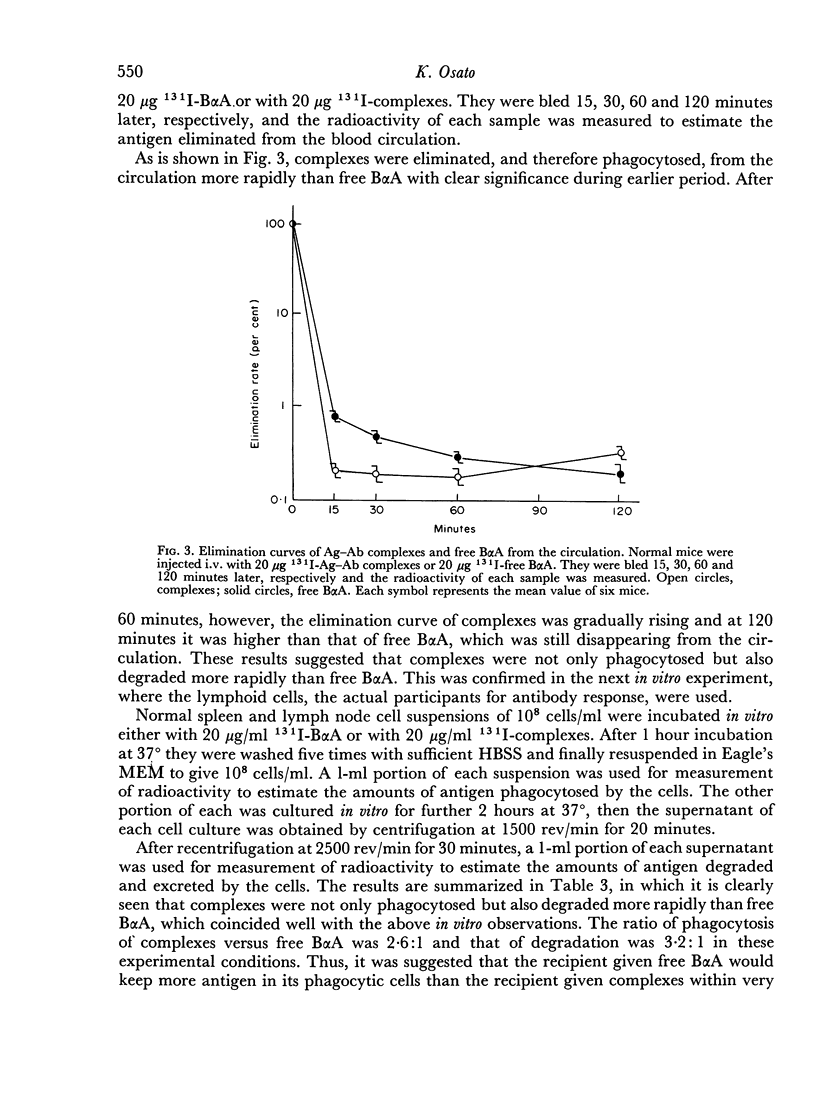
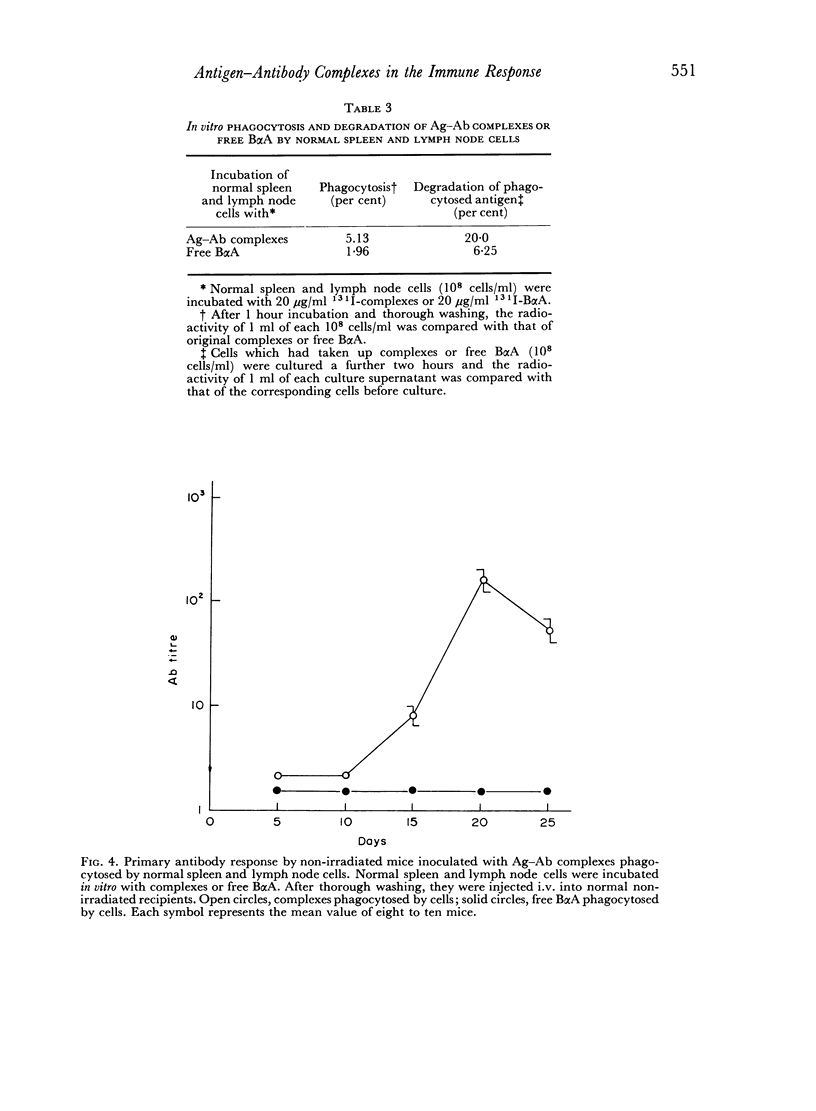
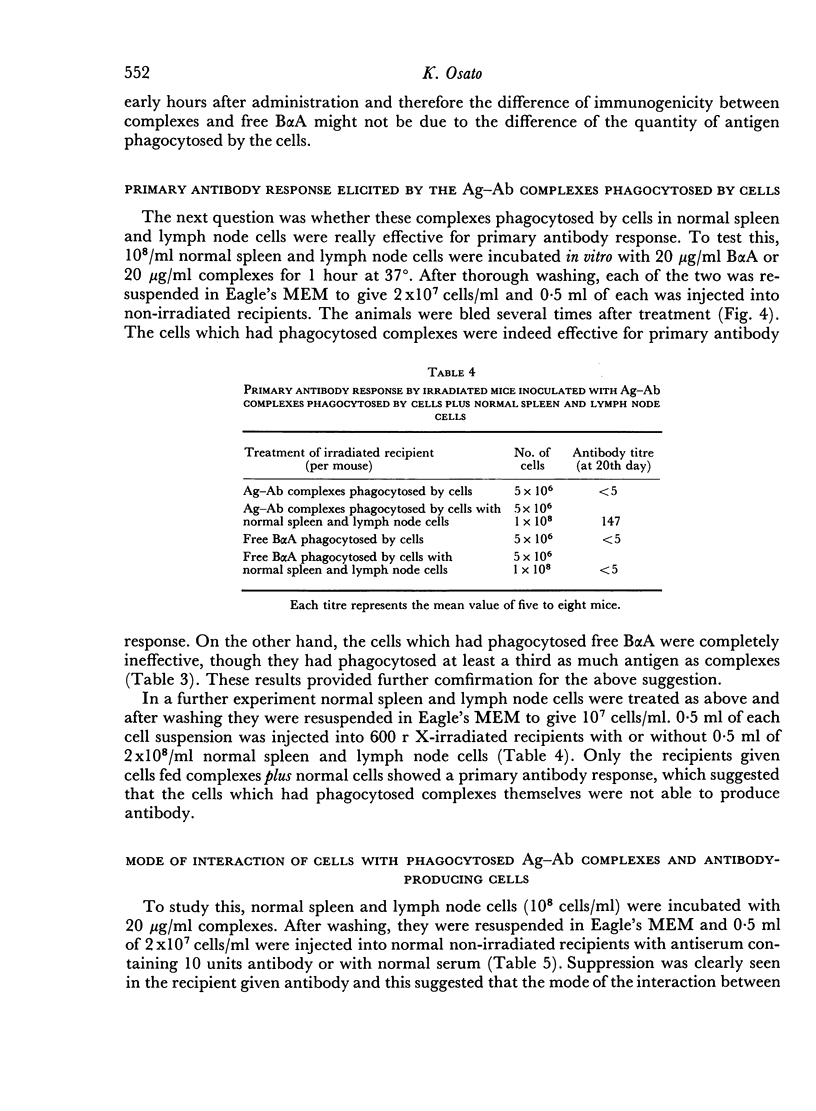
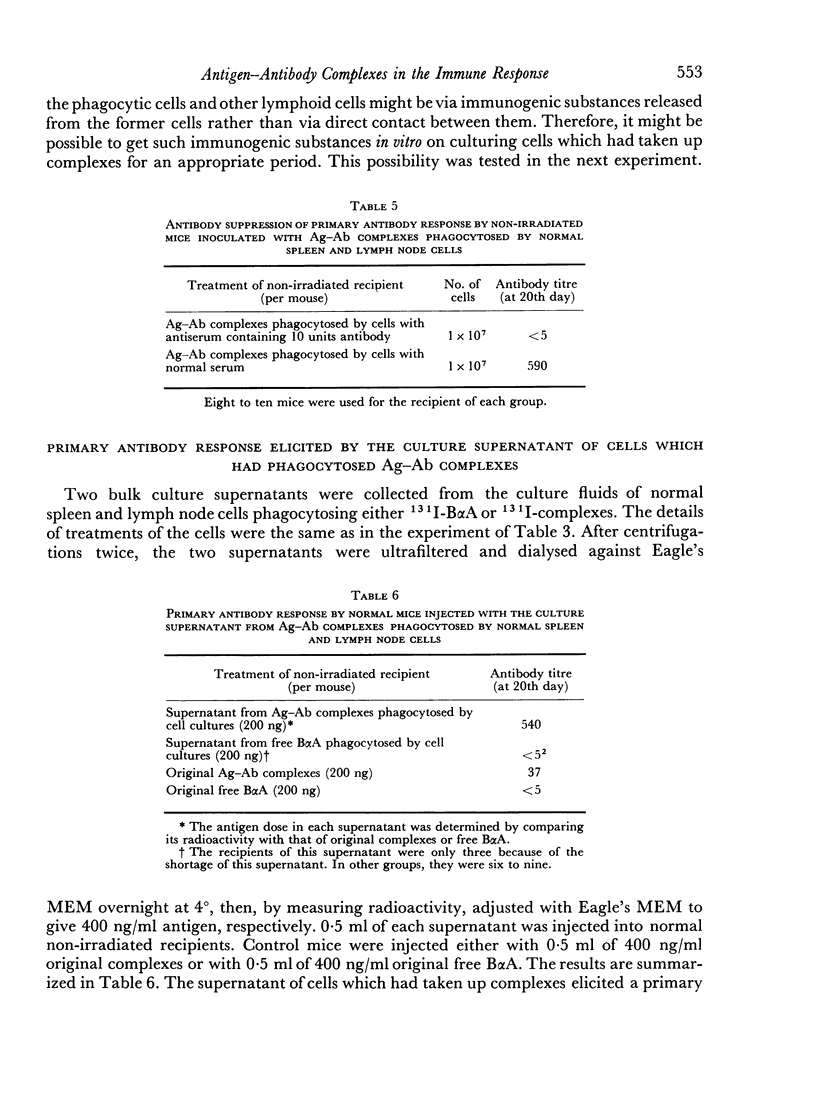
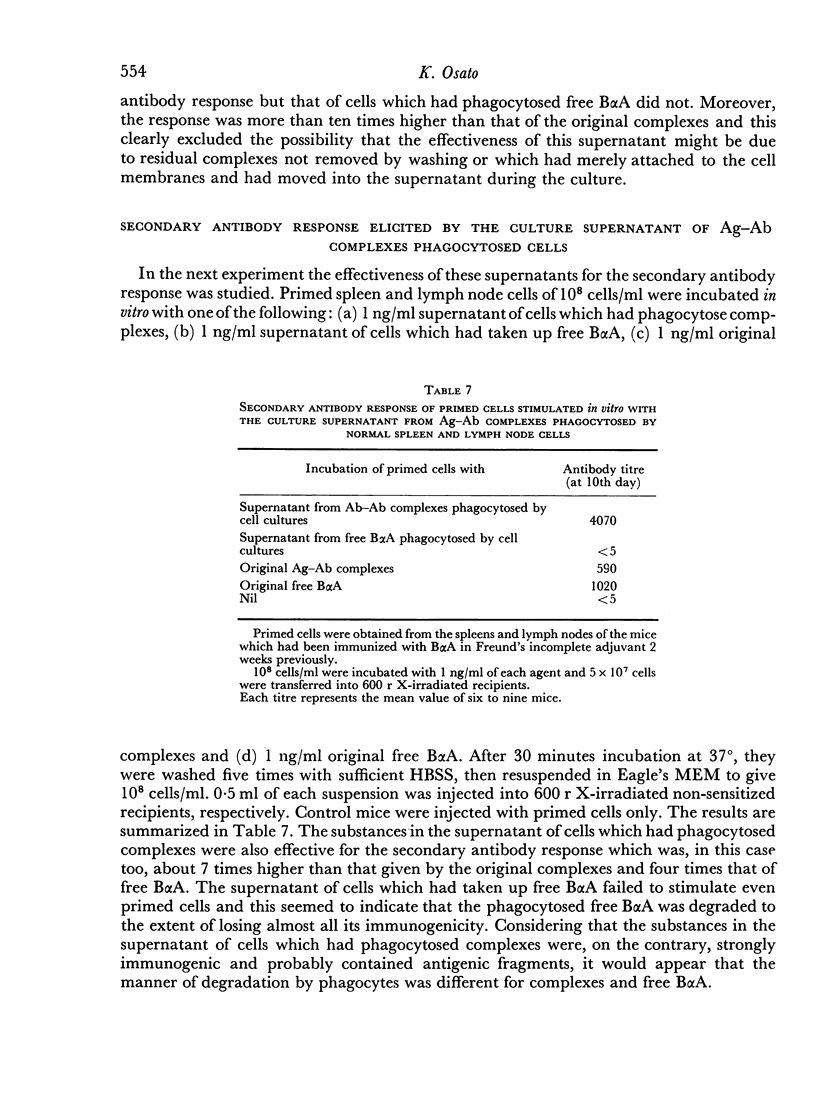
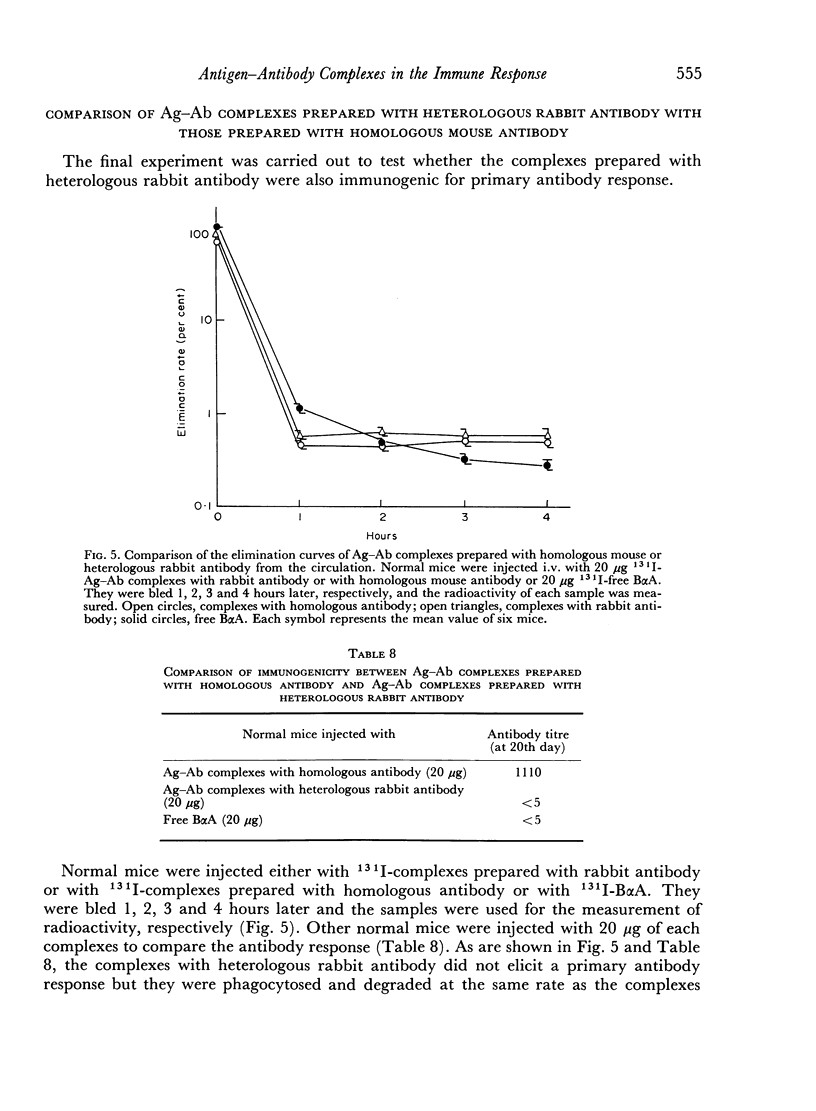
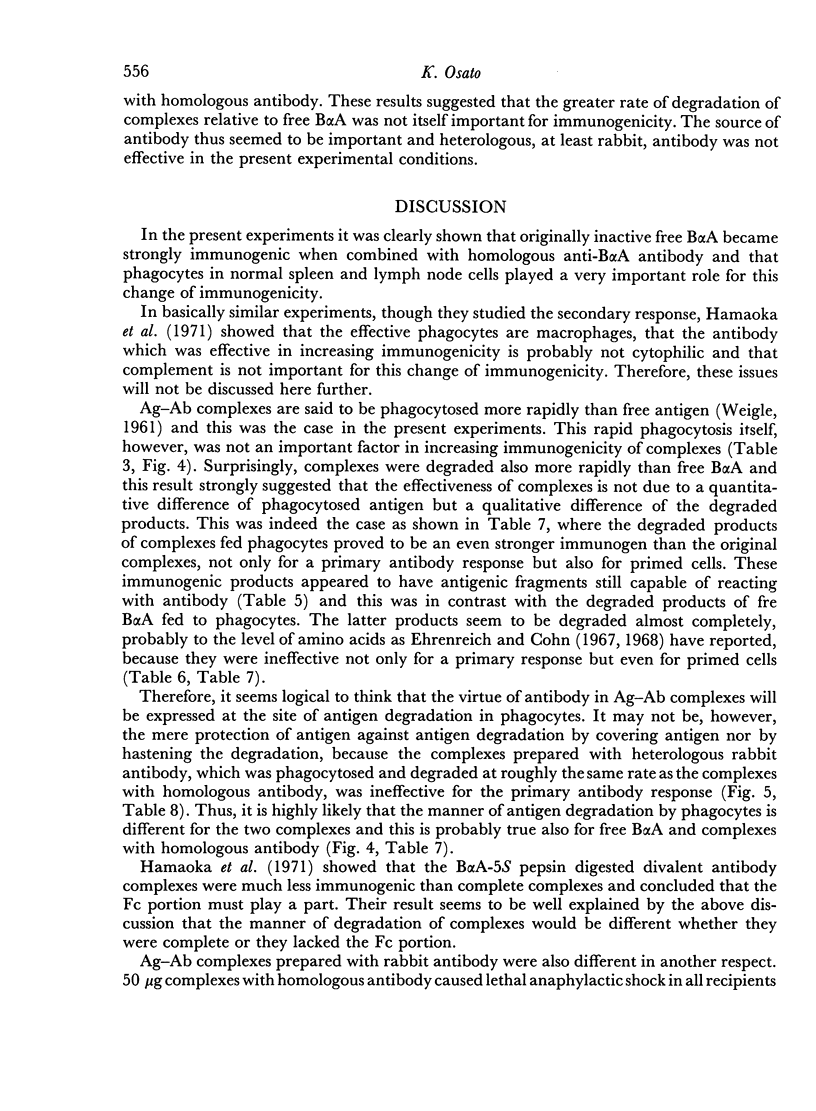
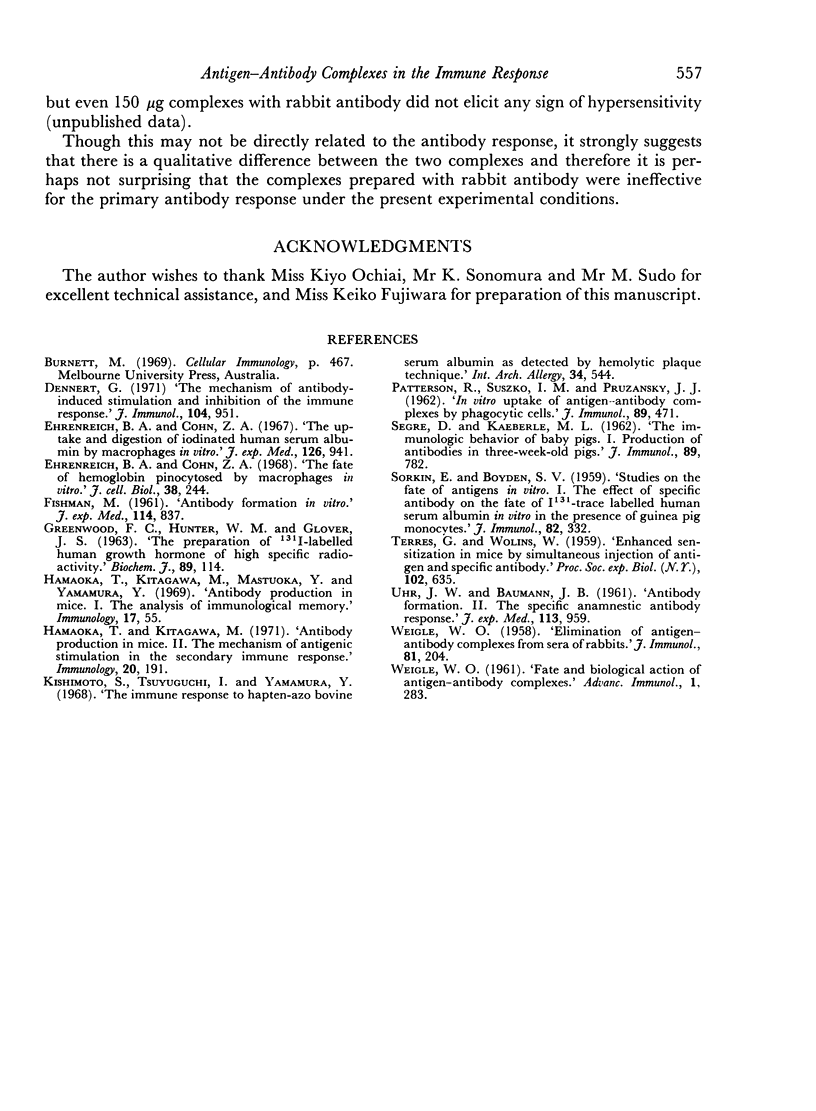
Selected References
These references are in PubMed. This may not be the complete list of references from this article.
- Dennert G. The mechanism of antibody-induced stimulation and inhibition of the immune response. J Immunol. 1971 Apr;106(4):951–955. [PubMed] [Google Scholar]
- Ehrenreich B. A., Cohn Z. A. The uptake and digestion of iodinated human serum albumin by macrophages in vitro. J Exp Med. 1967 Nov 1;126(5):941–958. doi: 10.1084/jem.126.5.941. [DOI] [PMC free article] [PubMed] [Google Scholar]
- FISHMAN M. Antibody formation in vitro. J Exp Med. 1961 Dec 1;114:837–856. doi: 10.1084/jem.114.6.837. [DOI] [PMC free article] [PubMed] [Google Scholar]
- GREENWOOD F. C., HUNTER W. M., GLOVER J. S. THE PREPARATION OF I-131-LABELLED HUMAN GROWTH HORMONE OF HIGH SPECIFIC RADIOACTIVITY. Biochem J. 1963 Oct;89:114–123. doi: 10.1042/bj0890114. [DOI] [PMC free article] [PubMed] [Google Scholar]
- Hamaoka T., Kitagawa M. Antibody production in mice. II. The mechanism of antigenic stimulation in the secondary immune response. Immunology. 1971 Feb;20(2):191–203. [PMC free article] [PubMed] [Google Scholar]
- Hamaoka T., Kitagawa M., Matsuoka Y., Yamamura Y. Antibody production in mice. I. The analysis of immunological memory. Immunology. 1969 Jul;17(1):55–69. [PMC free article] [PubMed] [Google Scholar]
- Kishimoto S., Tsuyuguchi I., Yamamura Y. The immune response to hapten-azo bovine serum albumin as detected by hemolytic plaque technique. Int Arch Allergy Appl Immunol. 1968;34(6):544–555. doi: 10.1159/000230148. [DOI] [PubMed] [Google Scholar]
- PATTERSON R., SUSZKO I. M., PRUZANSKY J. J. In vitro uptake of antigen-antibody complexes by phagocytic cells. J Immunol. 1962 Oct;89:471–482. [PubMed] [Google Scholar]
- SEGRE D., KAEBERLE M. L. The immunologic behavior of baby pigs. I. Production of antibodies in three-week-old pigs. J Immunol. 1962 Dec;89:782–789. [PubMed] [Google Scholar]
- SORKIN E., BOYDEN S. V. Studies on the fate of antigens in vitro. I. The effect of specific antibody on the fate of I 131 trace labeled human serum albumin in vitro in the presence of guinea pig monocytes. J Immunol. 1959 Apr;82(4):332–339. [PubMed] [Google Scholar]
- TERRES G., WOLINS W. Enhanced sensitization in mice by simultaneous injection of antigen and specific rabbit antiserum. Proc Soc Exp Biol Med. 1959 Oct-Dec;102:632–635. doi: 10.3181/00379727-102-25342. [DOI] [PubMed] [Google Scholar]
- UHR J. W., BAUMANN J. B. Antibody formation. II. The specific anamnestic antibody response. J Exp Med. 1961 May 1;113:959–970. doi: 10.1084/jem.113.5.959. [DOI] [PMC free article] [PubMed] [Google Scholar]
- WEIGLE W. O. Elimination of antigen-antibody complexes from sera of rabbits. J Immunol. 1958 Sep;81(3):204–213. [PubMed] [Google Scholar]


